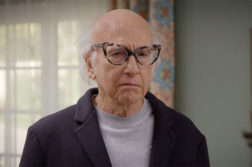Can governments create creativity? Is cultural expression, or even great art, something that can be delivered by a State-run institution or a government grant? Or is it something best left to artists themselves, with the help of the market and free enterprise? Just how do we measure the value of something like "creativity" or "culture" anyway?
These are some of the questions which will occupy the 100-odd members of Cate Blanchett’s "Towards a Creative Australia" group, the arts and culture component of Kevin Rudd’s 2020 Summit. The background paper to the forum frames a discussion around the following: What role does government have in supporting traditional art forms, and in promoting innovation? How can the cultural sector better balance the desire for creative output with the intrinsic worth of the artistic process? How can we foster a population with wide-ranging intellectual and creative curiosity?
When the list of 2020 summiteers hit the media, I explored the bios of the delegates for Larvatus Prodeo. Unfortunately, few of the delegates chosen by Cate Blanchett and Julianne Schultz are equipped to answer these questions of cultural policy, creative innovation and the impact of converging technology on artistic practice.
While in many cases the delegates are highly respected practitioners — some of them are even bona fide stars or the screen or stage — overall the list is unrepresentative, conservative and skewed towards either film or the traditional "high Arts" art forms like classical music and stage theatre.
The sins are mainly of omission. For instance: there is not one delegate from the gaming sector, despite the heavy emphasis made by the Summit about the importance of gaming and other "emerging creative industries". There are no game designers, game industry producers; in fact, there’s not even a prominent graphic designer or animator, though there is one digital special effects wizard.
Other art forms miss out too: new media arts, community cultural development, contemporary music, ceramics, jewelry and crafts.
In contrast, the list of attendees is full of film industry representatives: screen actors, screen producers, screen directors and TV broadcasters and media executives. This is not a bad thing in itself: clearly Australia’s film industry is an important part of our creative culture. Film and TV does generate significant revenues and employ a lot of Australians — around about $1.5 billion and 16,000 in 2003-4 according to Australian Film Commission figures — but around 60 per cent of this represented by the TV broadcasters.
If you look at the statistics, the value of production from the local game design industry is actually fast catching up with screen. Last year, according to the best recently available figures from the AFC and the Bureau of Statistics, screen production in Australia stood at around $200 million, while game production stood at $130 million.
The concentration on the film industry in the "Creative Australia" group is disproportionate. There are other, far bigger cultural industries than film in Australia – like publishing.
As Michael Heyward from Text pointed out in a long essay for The Age late last year, Australian publishing is a huge but neglected success story: "[In 2003-4] publishers reported income of $1.3 billion — equal to $2.5 billion at the till. Compare this to the Australian film industry. One could weep for its fate. Box office takings last year were $867 million and Australian films constituted $40 million, of which the taxpayer provided a $110 million subsidy."
Heyward points out that this represents a public subsidy of $70 million of public funds over and above what Australian films earned at the box office, leading him to argue that our local film industry is on "life support". As 2020 attendee and Three Dollars director Robert Connolly argued recently in his insightful paper "Embracing Innovation: A New Methodology for Feature Film Production in Australia", excessive government bureaucracy in the film funding bodies has fostered a culture that is far from innovative: "the current production methodology has become entrenched and inflexible in Australia."
In contrast to our unpopular film industry, Australians show a profound love of local writers, and read their books and attend their events avidly. But Michael Heyward won’t get the chance to argue for publishing at the 2020 Summit — like the game industry, he hasn’t been invited. In fact, no trade publisher has been invited.
There are blind spots like this all over the 2020 briefing document. The stats it presents are highly selective: film gets a thorough profile while contemporary music, publishing and community broadcasting are ignored.
Worse, the document is riddled with methodological inaccuracies. Take page 11, which purports to compare Australian cultural funding between countries and split up between the Commonwealth, States and Territories and local government. The problem with the figures is that they are apples and oranges: the country-by-country ranking only includes the Australia Council, while the broader national figures include the states, territories, local government, the ABC, SBS and the film funding bodies. In fact, there are no internationally recognised and reliable country-by-country public arts funding figures, a problem an OECD working group is currently trying to correct.
But all is not lost. Some of the 2020 attendees, at least, are thinking hard about what a future Australian cultural policy might look like. One of them is Macquarie University economist David Throsby, who has long been an intelligent and internationally respected commentator on the shape and structure of the Australian cultural industries.
Another is Marcus Westbury, who unlike most in the group comes from a decidedly non-traditional perspective concerning the sort of art and culture he is interested in.
Westbury argues not for more arts funding but rather the need to slice away the red tape and government bureaucracy that form the creative constraints and barriers to entry for Australian artists and arts workers.
He writes: "The ratio of compliance costs to capital is more stark in the creative industries than anywhere else is society. The entanglement of public liability insurance, risk assessments, liquor licensing, legal costs, copyright compliance, licensing fees, noise regulations, place of public entertainment licensing and the myriad of other issues involved in creating anything is massive and growing. Not to mention that artists are subject to all the general issues involved in running any kind of small business. It is becoming increasingly difficult to make, show, or sell anything without a massive investment up front to clear these hurdles."
Interestingly, Westbury’s idea here is strikingly similar to Robert Connolly’s recommendations. Both are complaining about entrenched work practices and meaningless red tape that strangles creativity and stifles innovation. This is the sort of new thinking I hope we hear from the "Creative Australia" group at the 2020 Summit.
We can only hope. But given the make-up of the panel and the background paper they’ve been given, it looks like we’ll see the usual calls for more funding from the entrenched interest groups in film and the performing arts.
Donate To New Matilda
New Matilda is a small, independent media outlet. We survive through reader contributions, and never losing a lawsuit. If you got something from this article, giving something back helps us to continue speaking truth to power. Every little bit counts.



